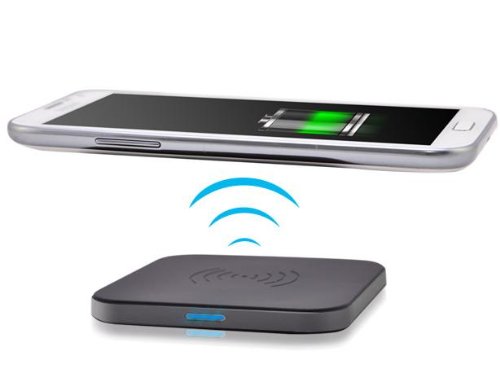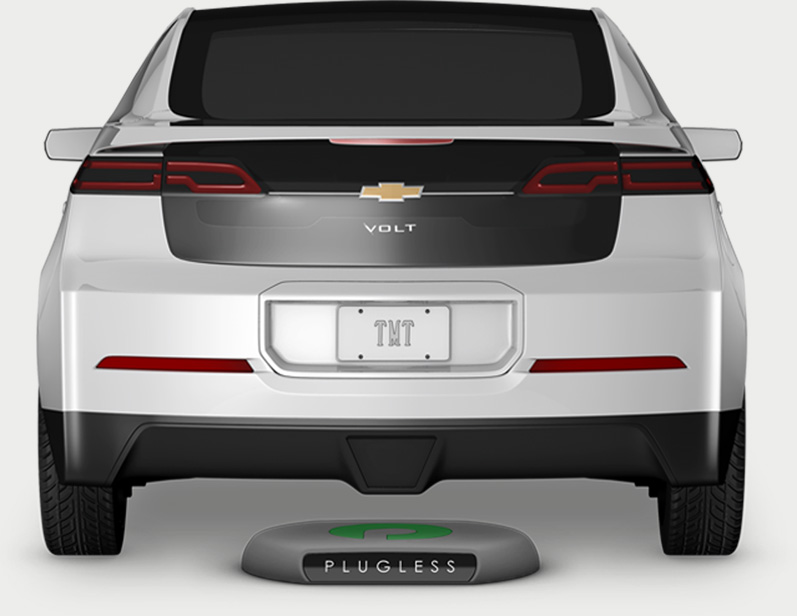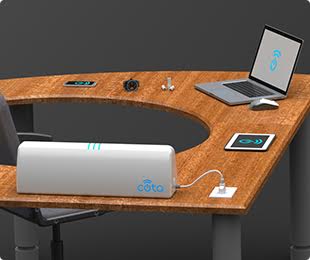Let’s wirelessly charge everything
We hear about wireless charging a lot lately: electric vehicle makers are working on it, cellphones have become compatible, even furniture has the ability to wirelessly charge devices.
There’s even some speculation that the next iPhone will be equipped with wireless charging capabilities, according to Bloomberg Business.

Wireless charging, also referred to as inductive charging, is based on the principles of magnetic resonance. The technology consists of two coils, a receiver coil and transmitter coil. The receiver coil is embedded into the original device (for example, a cellphone) while the transmitter coil is embedded into the wireless charging device. When alternating current (AC) is passed through the transmitter coil, a magnetic field is generated. This is what creates the voltage in the receiver coil that powers the device or charges a battery.
Although we’ve been hearing about it more frequently, wireless charging isn’t a new concept. Think about an Oral-B rechargeable toothbrush. This device has been using inductive charging since the 1990s. Then in 2006, The Massachusetts Institute of Technology revealed its research, demonstrating efficient power transfer between coils that were separated by a few meters. What followed was a slew of unveilings ranging from Visteon’s wireless charging for in-vehicle use, Energizer’s wirelessly charged Wii remote, and smartphones with optional inductive charging accessories. Now, major companies like Samsung, Apple, and Blackberry are offering wireless chargers as well.
Wireless charging has become so popular that back in 2008, 230 companies joined together to support the Qi wireless charging standard, forming the Wireless Power Consortium (WPC).
Qi is the agreed upon global wireless charging standard that enables closely and loosely coupled power transfer. The latest version supports wireless fast charging at 15 watts. According to ABI Research, 713 million Qi products will ship by 2020.
Qi is the most widely used power standard, available in thousands of hotels, airports, and public venues across the world. There are over 90 Qi-enabled smartphones on the market today, as well as 15 models of Qi-enabled cars and a plethora of accessories.
According to Research and Markets, the global wireless charging market is likely to grow significantly in the future because of emerging trends like the increased adoption of wireless EV charging, which demands wireless technology. The high growth potential of wireless charging has compelled many automobile companies to implement wireless charging systems for EVs and plug-in hybrid electric vehicles (PHEVs).
When it comes to wirelessly charged cars, plugless charging started with models like the Nissan Leaf and Chevy Volt, and now the Tesla Model S is catching on.

With the help of a system called Plugless, a Tesla Model S can be charged wirelessly, too. The cars charge on a parking pad that can be installed by plugging in to any 50 Amp circuit near the spot, or by having an electrician hardwire the pad into your home’s electrical. The wireless charger boasts a quick 7.2 Kw charge – the equivalent of 20 miles for every hour charged.
Wireless charging became even more popular last year when Ikea introduced wireless charging furniture, integrating Qi-power into beds, side tables, lamps and desks to eliminate dreaded cable messes.
A company named Ossia recently introduced its flagship product, Cota, a wireless power solution that safely delivers remote, targeted energy to devices from six feet to as far away as thirty feet, depending on the charger model. The company developed smart antenna technology that allows for multiple devices to charge without any user intervention, enabling a wire-free experience.
That means smart home products, wearables and other devices remain charged at all times — without users having to plug devices in to a charger or place them on a charging pad. Cota technology functions similarly to the way Wi-Fi transmitters deliver data to devices, transmitting both energy and data around corners and over obstructions without requiring a direct line of sight.
Now, Cota has teamed up with OSF Global Services, a cloud-technology consultant to demonstrate the potential of the cloud and wireless power to advance smart home technology.

“For the Internet of Things and wearables to reach their full potential, it’s absolutely essential to have a source of wireless power, as well as a cloud-based technology platform that enables devices to work together seamlessly,” said Hatem Zeine, founder and CEO of Ossia and creator of Cota technology. “OSF’s cloud technology expertise combined with Cota’s innovative wireless power technology removes the remaining hurdles to widespread smart home and wearables adoption, and we’re excited about working with OSF to demonstrate our technology’s amazing potential.”
So, what are the advantages of a wirelessly-charged world? Wirelessly charging devices reduces the risk of electrical faults like short circuits, creates less wear-and-tear on devices, and is an overall convenient charging alternative.
However, it can result in slower charging rates due to lower efficiency and can sometimes be costly due to the extra electronics required in the device and charger.
Like any emerging technology that is poised to grow, new solutions will continue to arise in hopes of making it even more efficient for consumers.

Comments are closed, but trackbacks and pingbacks are open.